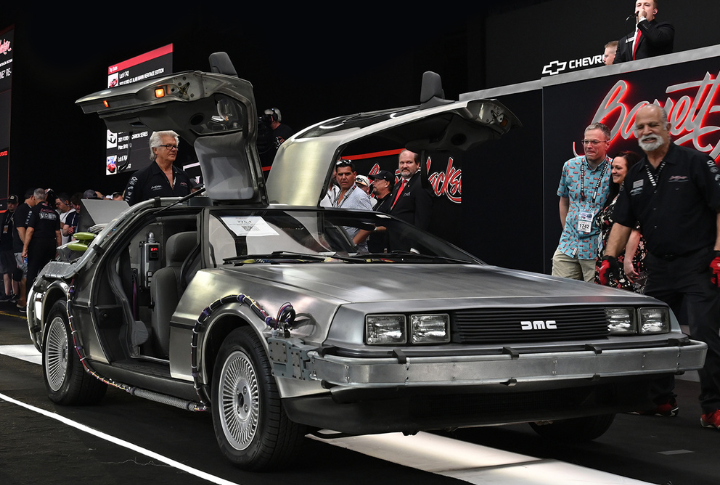
17 Classic Cars to Avoid at All Costs

The allure of classic cars is undeniable, with their timeless designs and nostalgic charm. However, not all vintage vehicles are worth the investment. Here are 17 classic cars that, despite their historic appeal, come with significant drawbacks that make them less desirable for collectors and casual enthusiasts.
1975 Bricklin SV-1

The Bricklin SV-1, introduced in 1974, promised safety and performance but delivered neither effectively. Its gullwing doors and fiberglass body were innovative, yet mechanical issues and poor build quality plagued the SV-1. Frequent electrical problems and a scarcity of parts make it costly to maintain. Additionally, its underpowered engine undermines the sporty image it sought to project.
1981 DeLorean DMC-12

Immortalized by the “Back to the Future” franchise, the DeLorean DMC-12 is more revered for its cinematic role than its on-road performance. Despite its iconic stainless steel body and gullwing doors, the DMC-12 suffers from a lackluster engine and an unreliable build. Parts scarcity also explains why this classic is best admired from afar rather than owned.
1976 Aston Martin Lagonda

The 1976 Aston Martin Lagonda was a bold attempt to merge advanced technology with luxury, but its execution had flaws. The advanced digital dashboard, while ahead of its time, proved unreliable due to early automotive electronics. The car’s futuristic design couldn’t fully compensate for the frequent electrical problems and expensive upkeep.
1974 Jensen-Healey

The Jensen-Healey combined British sports car style with an American engine, though early models suffered from oil leaks and variable build quality, including rust and electrical issues. While parts can be hard to find, dedicated enthusiasts and suppliers are available. Notably, owning a Jensen-Healey requires more maintenance than modern cars.
1971 Chevrolet Vega

The Chevrolet Vega, launched with high expectations to rival European and Japanese imports, faced significant issues. Its aluminum engine block and flawed cooling system caused severe oil consumption and overheating, while the body was prone to rust. These problems led to high maintenance costs and reduced robustness. Despite not being a typical collector’s car, the Vega holds historical significance for some people.
1980 Ferrari Mondial 8

While bearing the prestigious Ferrari name, the Mondial 8 is often cited as one of the brand’s least desirable models. Its V8 engine delivers underwhelming performance, and its handling is considered inferior to other Ferraris. Moreover, the Mondial 8’s complex electronics and high maintenance requirements make it a costly vehicle to keep running.
1982 Maserati Biturbo

The Maserati Biturbo aimed to bring Italian luxury to a broader audience but gained a reputation for unreliability. Electrical issues, frequent breakdowns, and expensive repairs plagued the car. While some argue the build quality wasn’t inherently bad, neglect and unsuitable climates likely contributed to problems. More dependable classic Maseratis are available for those seeking a smoother ownership experience.
1987 Cadillac Allanté

The Cadillac Allanté, with its Italian-designed body and luxurious interior, offered a stylish driving experience. However, dependability was a concern, with reports of electrical problems, problematic digital dashboards, and quality control issues throughout its production. The high cost of maintaining and finding parts for this discontinued car makes it challenging for most drivers.
1978 Triumph TR7

Triumph’s TR7 aimed to modernize the British sports car image but ended up being fraught with issues. Its wedge-shaped design was polarizing, and its build quality was inconsistent. The TR7 suffered frequent mechanical problems, including head gasket failures and electrical issues. Rust is also a significant concern, particularly in older models. With high maintenance costs and limited solidity, the TR7 is best avoided by classic car buyers.
1974 MGB GT

While charming in design, the MGB GT is infamous for its lackluster performance and dependability issues. Its B-series engine is underpowered, and the car’s electrical system is prone to faults. Rust is a common issue, further complicating maintenance efforts. Parts availability is decreasing, making repairs increasingly difficult and costly. More reliable alternatives are available for those seeking a classic British sports car.
1972 Fiat 124 Spider

Though stylish and affordable, the Fiat 124 Spider is known for its infallibility and rust problems. Its twin-cam engine, while advanced for its time, requires frequent maintenance to keep running smoothly. Electrical faults are common, adding to the vehicle’s long list of issues. The cost of repairs and difficulty finding parts can outweigh the car’s initial appeal.
1989 Lotus Elan M100

The 1989 Lotus Elan M100, despite its innovative design and sharp handling, had some drawbacks. While the Isuzu-sourced engine was reliable, electrical issues could arise. Since the Elan M100 had a limited production run, finding replacement parts can be more challenging and expensive than other Lotuses. Additionally, maintaining the Elan’s suspension system requires a familiarity with Lotus vehicles.
1975 AMC Pacer

Known for its distinctive bubble-like design, the AMC Pacer was a commercial failure due to several drawbacks. Its wide body, paired with a heavy engine, resulted in poor performance and fuel economy. While some Pacers were known for mechanical issues, prone to rust, and unreliable build quality, not all experienced these problems.
1976 Ford Mustang II

Produced during the oil crisis, the Mustang II focused on fuel efficiency over performance, featuring smaller, less powerful engines. Although there were higher-performance versions like the Cobra II, the overall design lacked the aggression of earlier Mustangs. Build quality was mediocre, with rust being a common issue. Restoration can be costly compared to the car’s value. Many car fanatics prefer earlier or later models for better performance and classic aesthetics.
1974 Jaguar XJ12

Jaguar’s XJ12, while luxurious, is unreliable, particularly with its complex V12 engine. Frequent overheating and electrical problems make the XJ12 a challenging car to maintain. Rust is also prevalent, especially in the body panels and chassis. The cost of repairs and difficulty finding parts can quickly become prohibitive.


